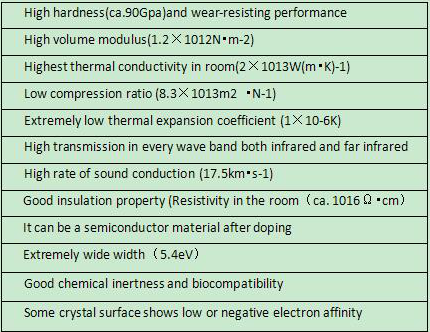Company tel:+86-379-63184520
Contact number:+86-15937921751
Postcode:471000
Email:info@yuxindiamond.com
Address:3-1-508 Luoyang National University Science Park, No. 2 Penglai Road, Jianxi District, Luoyang, China 471000
Nanodiamonds Are Forever
Say goodbye to the slogan "diamonds are forever." For industries that use dry lubricant, the up-and-coming phrase is more likely to be "broken nanodiamonds are forever."
Researchers at the U.S. Department of Energy's (DOE) Argonne National Laboratory are combining nanodiamonds with two-dimensional molybdenum disulfide layers and breaking them to create a self-generating, very-low-friction dry lubricant that lasts so long it could almost be confused with forever. The substance could have hundreds of industrial applications and can be used virtually wherever two pieces of metal rub together in dry conditions.
The most commonly used solid lubricants on the market today take the form of graphite paste. We use these lubricants to grease doorknobs and bike chains, among other things.
In 2015, Anirudha Sumant of the Nanoscience and Technology division and his colleagues achieved a breakthrough in solid lubrication technology by demonstrating superlubricity (near-zero friction) at engineering scale for the first time by using graphene combined with nanodiamonds. This approach was revolutionary, and since then his group has continued to further develop the technology.
Most recently, Sumant replaced the graphene in the process with molybdenum disulfide, to see how other 2-D materials would behave. He was expecting the process to resemble the one observed with graphene-nanodiamond lubricant. However, the team was surprised when Diana Berman, the lead author and Argonne post-doctoral fellow, couldn't see nanodiamonds in the material. Instead, she found balls of onion-like carbon.
What was happening? The molybdenum disulfide was breaking up into molybdenum and sulfur and reacting with the nanodiamonds to convert them into onion-like carbon.
The Argonne team, which included Sumant, Diana Berman, Subramanian Sankaranarayanan, Badri Narayanan, Mathew Cherukara, Ali Erdemir and Alexander Zinovev, realized that sulfur diffusion was increasing the strain in the nanodiamonds, subsequently breaking them and converting them into onion-like carbon.
This was a blessing in disguise, said Sankaranarayanan, since their efforts also unlocked another secret of how other 2-D materials will interact with nanodiamonds with the same result.
Diamond, as one of the most special materials in natural world, is featured with the highest hardness, low friction coefficient, high elasticity modulus, high thermal conductivity, high insulation class, wide energy gap, great sound propagation rate and favorable chemical stability, which are presented in below Table. In spite of such unique features, the natural diamond has always been existed in the form of gem, with its variability and rareness sharply limiting its application. Luoyang Yuxin Diamond Co., Ltd‘s CVD Diamond film, on the other hand, integrates such physical and chemical properties, with lower cost than natural diamond and applicable to be made into various shapes, thus enjoying extensive application prospect in electronic industry, optical field and mechanical industry.








